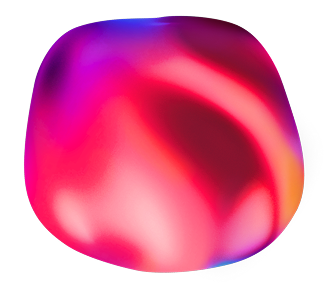Based on work support systems and employee workspace services that encompass extensive information sharing, task processing, status checking, and purchasing, we researched the common characteristics and workflows of these services and conducted analysis aimed at realizing an optimized system.
SK Gas Design System Consulting
CLIENT
DATE
SERVICE
INDUSTRY
SK Gas aimed to establish a consistent and convenient employee experience standard through SK Gas’s work support portal UX/UI standards, enabling all members to easily familiarize themselves with their tasks and improve productivity.
To address issues such as the vast amount of information and complex structure of existing internal systems, repetitive functions across various tasks, system-centered screen layouts, text-heavy information delivery, and lack of user guides, there was a need for a company-wide design system framework.
The UX/UI standard guide prioritizes efficiency for internal employees and partner companies, focusing on management innovation and collaboration based on the purposes and usage methods of both B2B and B2C.

SK Gas aims to become a global leader as a ‘Total Solution Provider’ in the energy industry by expanding its existing LPG business, maximizing synergies, and creating new growth engines in response to the rapidly changing energy sector.
Fundamental Principles for Building a Design System
SK Gas’s design system reflects the unique characteristics of its clients’ work and considers a user environment that can adapt to various business site conditions.
To achieve this, interviews were conducted with on-site personnel and system development PMs, analyses of ongoing or operational systems were performed, UX/UI best practices were collected through benchmarking to address key issues, and UI hypotheses were established and reviewed based on client feedback.
The expected benefits of SK Gas’s optimized, long-term design system are as follows:
First, it proposes the optimal information architecture by analyzing gaps and issues between system work menus and users, based on understanding the nature of the work.
Second, by establishing a UX standard guide for the entire B2B enterprise system, it reduces confusion in system usability for employees and provides a consistent and familiar experience across multiple systems.
Third, by setting up governance for the design system, it promotes the scalability and integration of internal systems.
Looking into the External Environment
By benchmarking publicly available work systems that are actively used in the global environment, we collected recent trends on improving user-centered workflow processes. These insights were shared in depth with the client, contributing to a much more concrete reflection of their requirements in the final deliverables.
01. B2BC System Analysis

< Domestic vs Global B2BC System Benchmarking >
02. Finding UX Clues for Work System Innovation
In corporate work systems, UX design significantly contributes to intuitive access to task information, optimized workflow, enhanced task accessibility, improved collaboration efficiency through a consistent UX environment, and minimization of human errors.
However, internal work systems are often built and operated with a focus on functionality due to factors such as budget constraints and changes in work processes, and are frequently used for long periods without UX updates. As digital work environments advance, employees encounter various B2B and B2C services and often raise concerns about inconveniences in their company’s systems, demanding improvements for management innovation.
Although it is widely recognized among system managers that user experience–focused work systems improve corporate productivity, there is often uncertainty about how to proceed specifically and whether the expected benefits justify the costs. Therefore, UX design improvement projects for work systems require extensive communication with clients in the early stages.
Since work systems are used by skilled users performing repetitive and specialized tasks, lack of sufficient insight in UX/UI design can lead to mistakes such as making the system overly complicated when simplification is needed, oversimplifying steps that require explanation or caution, or designing transitions to linked tasks that consume unnecessary time. Additionally, client representatives often worry whether users, who are very familiar with existing systems, will accept and immediately adopt the new UX/UI in the field. Accordingly, careful client reviews of the work system, sufficient retraining, and sharing research on UX/UI cases in similar fields greatly impact the success of the project.
Understanding Information Architecture Before Design
The focus was on avoiding simply producing a large volume of design outputs by concentrating only on design resources.
Since this is a workspace used by internal employees, it was essential to assess both usage frequency and importance to improve work efficiency. Key statistics were reviewed as follows:
We identified tasks most frequently accessed by staff and those critical for decision-making, allowing us to separate areas impacting overall work. Additionally, menus related to mandatory compliance with environmental responsibilities were distinguished to address ESG governance requirements.
Deriving Insights on Design Governance
Through analysis of task frequency and importance, we were able to understand information processing criteria from the user’s perspective and identified the following four viewpoints.

01. Navigation in Layout
Through research and analysis of navigation areas, structure, and accessibility to various information pages, it was found that the boundaries between the GNB menu, utility menu, and submenus are clearly defined, and the left-side LNB structure provides an intuitive and enhanced accessibility experience.

02. Layout & Grid system
Through research and analysis on layouts and grid usage for extensive information processing, it was demonstrated that the Top (GNB, Utility) – Left (Submenus) structure combined with navigation area collapse features ensures expanded content area scalability.

03. Visual Hierarchy
Through research and analysis of menu structure depth and visual hierarchy in information delivery, intuitive hierarchical visualization was provided by grouping information, visualizing data with infographics, and using UI elements such as accordion (up/down) and slide (left/right).

04. Aesthetic Design
Through research and analysis on aesthetic design and identity reflection, it was observed that instead of using corporate identity colors as main colors, neutral tones or beige hues are primarily used, with ID colors applied only as accents, emphasizing content delivery.
Defining the Principles of the Design System
By applying the UX/UI standard guide, we propose solutions that enable consistent system access and improved work efficiency, facilitating smart and fast processing in a digital environment.
We can discuss five key directions that the system should embody.

Establishing the Design System
First, before the UI/UX guide of the design system, the goal was to establish the fundamental composition of design materials.
Among all design elements, it was necessary to initially select those applicable to SK Gas and identify items that could be implemented immediately before proceeding.

< Design Material, Saltcake >

<UX Design System >
Project Expectations
• Based on understanding the nature of work, we analyze gaps and issues between system work menus and users to propose the optimal information architecture.
• By establishing a UX standard guide for the entire B2B enterprise system, we reduce usability confusion for employees and provide a consistent and familiar experience across multiple systems.
• We establish governance for the design system to promote scalability and integration of internal systems.
A New Beginning for Digital Transformation
Nowadays, with digital transformation sweeping across industries, everyone is paying close attention, and it has become so familiar in our daily work environments that it feels almost natural.
Through recent projects, I have reaffirmed the belief that one must not focus solely on outward appearances or goals without truly understanding the business. A good system fundamentally starts with understanding the users’ work characteristics, then analyzing the system based on that understanding, and finding the direction the system should take. This has become the greatest challenge and goal.
Ultimately, all of this aims to innovate the work environment for improved and maximized efficiency and to integrate an optimal system accordingly.
With the establishment of this standardized design system, I hope it not only maximizes work performance but also helps employees work comfortably in their environment.
@SALTCAKE ALL RIGHTS RESERVED


